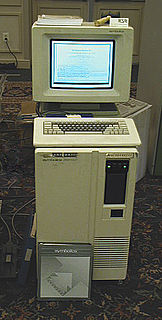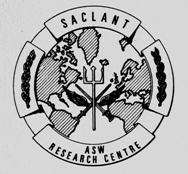European Strategic Programme on Research in Information Technology (ESPRIT) was a series of integrated programmes of information technology research and development projects and industrial technology transfer measures. It was a European Union initiative managed by the Directorate General for Industry of the European Commission.

In artificial intelligence, an expert system is a computer system emulating the decision-making ability of a human expert. Expert systems are designed to solve complex problems by reasoning through bodies of knowledge, represented mainly as if–then rules rather than through conventional procedural code. The first expert systems were created in the 1970s and then proliferated in the 1980s. Expert systems were among the first truly successful forms of artificial intelligence (AI) software. An expert system is divided into two subsystems: the inference engine and the knowledge base. The knowledge base represents facts and rules. The inference engine applies the rules to the known facts to deduce new facts. Inference engines can also include explanation and debugging abilities.
Swissair AG/S.A. was the national airline of Switzerland between its founding in 1931 and bankruptcy in 2002.
The Fifth Generation Computer Systems (FGCS) was an initiative by Japan's Ministry of International Trade and Industry (MITI), begun in 1982, to create computers using massively parallel computing and logic programming. It was to be the result of a government/industry research project in Japan during the 1980s. It aimed to create an "epoch-making computer" with supercomputer-like performance and to provide a platform for future developments in artificial intelligence. There was also an unrelated Russian project also named as a fifth-generation computer.
Information management (IM) concerns a cycle of organizational activity: the acquisition of information from one or more sources, the custodianship and the distribution of that information to those who need it, and its ultimate disposal through archiving or deletion.

A decision support system (DSS) is an information system that supports business or organizational decision-making activities. DSSs serve the management, operations and planning levels of an organization and help people make decisions about problems that may be rapidly changing and not easily specified in advance—i.e. unstructured and semi-structured decision problems. Decision support systems can be either fully computerized or human-powered, or a combination of both.
Technocracy is a form of government in which the decision-maker or makers are selected on the basis of their expertise in a given area of responsibility, particularly with regard to scientific or technical knowledge. This system explicitly contrasts with representative democracy, the notion that elected representatives should be the primary decision-makers in government, though it does not necessarily imply eliminating elected representatives. Decision-makers are selected on the basis of specialized knowledge and performance, rather than political affiliations, parliamentary skills, or popularity.
Air Alps,, was an Austrian regional airline based in Innsbruck.

The European Structural and Investment Funds are financial tools set up to implement the regional policy of the European Union. They aim to reduce regional disparities in income, wealth and opportunities. Europe's poorer regions receive most of the support, but all European regions are eligible for funding under the policy's various funds and programmes. The current Regional Policy framework is set for a period of seven years, from 2021 to 2027.

Design management is a field of inquiry that uses project management, design, strategy, and supply chain techniques to control a creative process, support a culture of creativity, and build a structure and organization for design. The objective of design management is to develop and maintain an efficient business environment in which an organization can achieve its strategic and mission goals through design. Design management is a comprehensive activity at all levels of business, from the discovery phase to the execution phase. "Simply put, design management is the business side of design. Design management encompasses the ongoing processes, business decisions, and strategies that enable innovation and create effectively-designed products, services, communications, environments, and brands that enhance our quality of life and provide organizational success." The discipline of design management overlaps with marketing management, operations management, and strategic management.
Paolo Magrassi is an Italian technologist known as one of the authors of the Supranet concept, the co-creator of the AlphaIC methodology for assessing the value of information technology expenditures, and the manager of the Pontifex project, which in the mid-1980s introduced a novel approach to complex fleet scheduling.
AlphaIC is a method for assessing the value of information technology (IT) investments that surpasses banal ROI analyses and looks at how IT affects an organization's intellectual capital.
Thomas Robert Gruber is an American computer scientist, inventor, and entrepreneur with a focus on systems for knowledge sharing and collective intelligence. He did foundational work in ontology engineering and is well known for his definition of ontologies in the context of artificial intelligence.
Alitalia - Società Aerea Italiana S.p.A., operating as Alitalia, was an airline which was once the flag carrier and largest airline of Italy. The company had its head office in Fiumicino, Rome. The airline was fully owned by the Government of Italy since 17 March 2020. The airline operated a fleet of Airbus A319, Airbus A320, Airbus A321, Airbus A330-200, and Boeing 777-200ER aircraft to over 34 scheduled domestic, European and intercontinental destinations. The airline operated from its main hub at Leonardo da Vinci–Fiumicino Airport. The airline was a full member of SkyTeam alliance and it had codeshare agreements with 42 airlines. In 2018, the airline was the twelfth-largest airline in Europe.

The SACLANT ASW Research Centre was the predecessor to the NATO Undersea Research Centre. It was known as The SACLANT ASW Research Centre from 1959 through 1986, and the SACLANT Undersea Research Centre from 1987 through 2003. The Centre was commonly referred to as SACLANTCEN.
Dr. Robert L. Simpson Jr. is a computer scientist whose primary research interest is applied artificial intelligence. He served as Chief Scientist at Applied Systems Intelligence, Inc. (ASI) working with Dr. Norman D. Geddes, CEO. Dr. Simpson was responsible for the creation of the ASI core technology PreAct. ASI has since changed its name to Veloxiti Inc.

Alcazar was a 1993 proposal to merge Austrian Airlines, KLM, Scandinavian Airlines System (SAS), and Swissair to create Symphony, which would have been Europe's largest airline.
Gunnar Johannsen is a German cyberneticist, and Emeritus Professor of Systems Engineering and Human-Machine Systems at the University of Kassel, known for his contributions in the field of human-machine systems.

Italia Trasporto Aereo S.p.A., trading as ITA Airways, is the state-owned flag carrier of Italy. The premium Italian airline is fully owned by the Government of Italy via their Ministry of Economy and Finance. As the successor to the defunct flag carrier of Italy, Alitalia, the airline is planned to take over most of its assets. The airline operates to over 41 scheduled domestic, European, and few intercontinental destinations. ITA Airways is a member of the SkyTeam global airline alliance.






